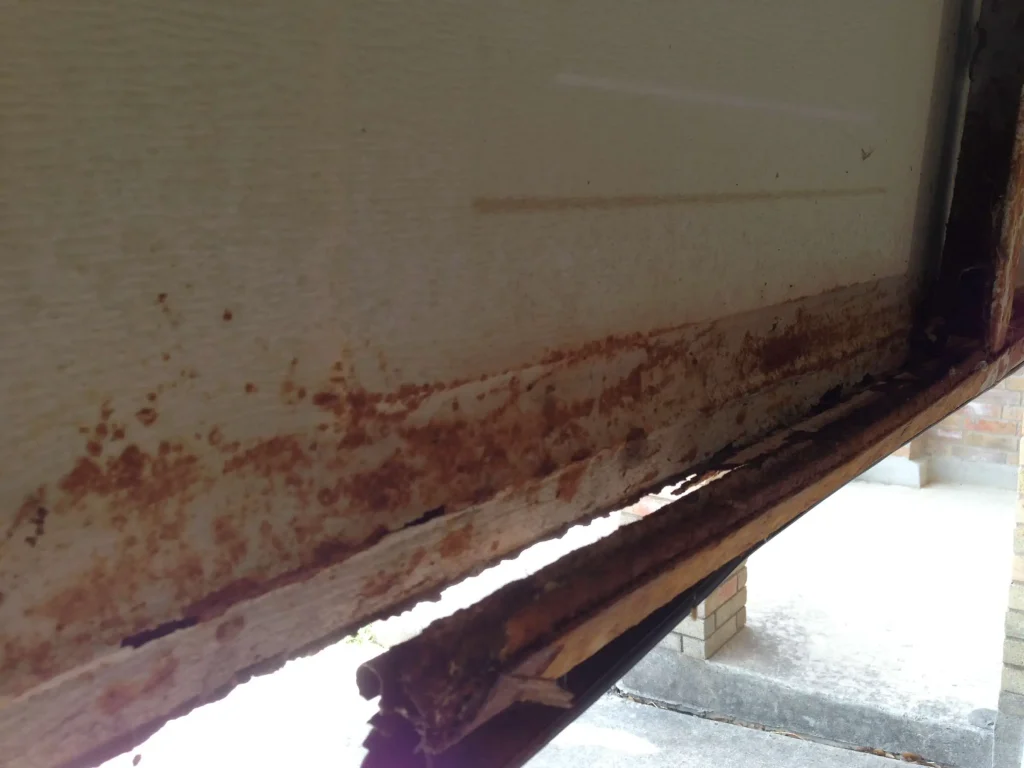Rust is an unwelcome guest that can slowly creep into various parts of your home, including your garage door. Over time, rust can compromise the structural integrity and aesthetics of your garage door, making it essential to address this issue promptly. In this article, we’ll guide you through the steps and tools needed to repair garage door rust, helping you restore both its appearance and functionality.

Understanding the Impact of Rust
Before we delve into the repair process, it’s crucial to understand why rust is a concern for your garage door. Rust forms when iron or steel reacts with moisture and oxygen, leading to the formation of iron oxide. For garage doors made of metal, this can be a common problem, especially in areas with high humidity or exposure to the elements.
Assessing the Damage
The first step in repairing garage door rust is to assess the extent of the damage. This evaluation will help you determine the level of repair required and the materials you’ll need. Here are some key factors to consider:
- Surface Rust: Surface rust is superficial and typically affects only the outer layer of the metal. It can often be addressed with cleaning and painting.
- Deep Rust: Deep rust goes beyond the surface and can compromise the structural integrity of the garage door. In such cases, repairs may involve sanding, filling, and repainting or, in severe cases, replacing affected parts.
Tools and Materials You’ll Need
The tools and materials required for repairing garage door rust will depend on the severity of the rust and the specific repair method you choose. Here’s a list of commonly needed items:
Tools:
- Wire brush or wire wheel attachment for a drill
- Sandpaper (various grits, including coarse and fine)
- Paint scraper
- Screwdriver
- Rust converter (optional)
- Putty knife or filler applicator
- Paintbrushes or spray paint equipment
- Safety goggles and gloves
- Drop cloths or plastic sheeting for workspace protection
Materials:
- Rust remover or rust converter
- Primer
- Paint (matching the color of your garage door)
- Filler or putty (if needed)
- Rust-inhibiting primer (optional, for added protection)
Step-by-Step Repair Process
1. Prepare the Workspace
Begin by preparing your workspace. Lay down drop cloths or plastic sheeting to protect the area around your garage door from paint splatters and debris.
2. Safety First
Put on safety goggles and gloves to protect yourself during the repair process. Rust and rust-related products can be harmful to your skin and eyes.
3. Remove Loose Rust and Paint
Using a wire brush or wire wheel attachment for a drill, remove loose rust and paint from the affected area. Work thoroughly, ensuring you reach all rusted spots.
4. Sand the Surface
Once the loose rust is removed, sand the surface with coarse sandpaper to create a smooth, even surface. Follow up with finer-grit sandpaper to further smoothen the area.
5. Apply Rust Remover or Converter
If rust remains after sanding, consider applying a rust remover or converter. These products chemically convert rust into a stable compound, preventing further corrosion.
6. Fill and Sand (If Necessary)
For deep rust or pitted areas, use a filler or putty to fill in the imperfections. After it dries, sand the area to achieve a smooth finish.
7. Apply Primer
Apply a rust-inhibiting primer to the treated area. This will help prevent future rust formation and provide a good base for the paint.
8. Paint the Garage Door
Finally, paint the repaired area to match the rest of your garage door. Use the appropriate paintbrushes or spray equipment for an even finish.
Conclusion: A Fresh Look and Protection
Repairing garage door rust not only restores its appearance but also ensures its longevity and functionality. Regular maintenance and addressing rust issues promptly can extend the life of your garage door and enhance your home’s curb appeal. Remember to follow safety precautions and choose the appropriate repair method based on the extent of the rust damage. With the right tools and materials, you can revitalize your garage door and protect it from future rust-related issues.



Leave a Reply